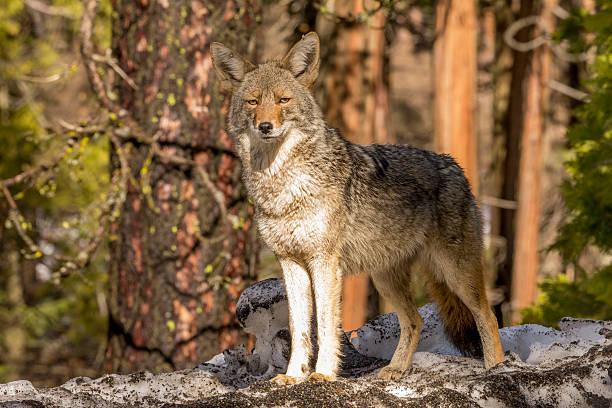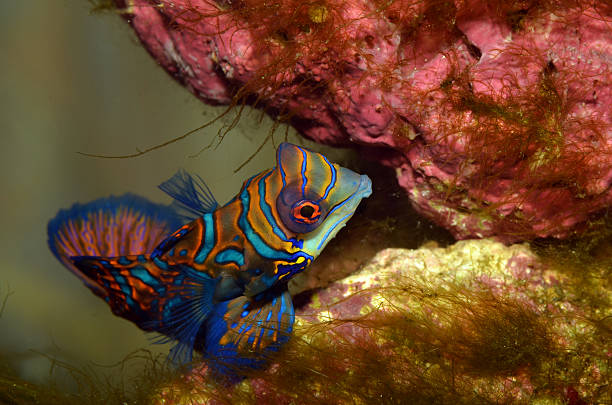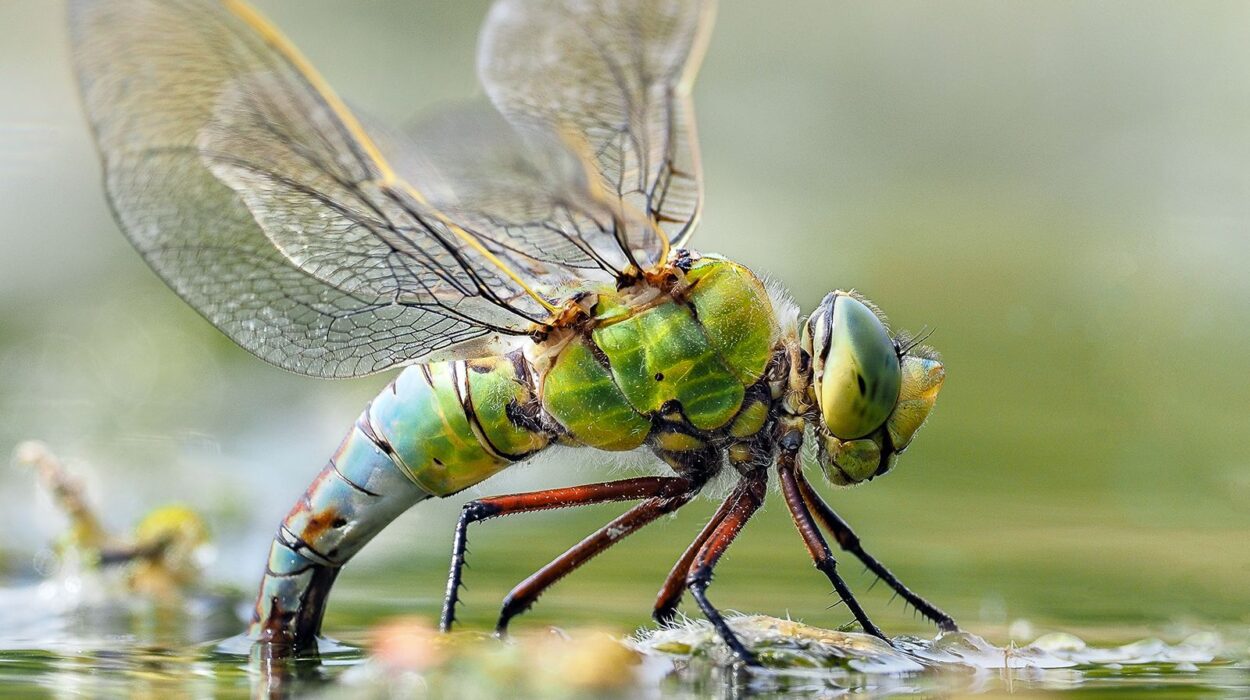Loyalty is one of the most admired qualities in both humans and animals. In the animal kingdom, loyalty can manifest in many ways—through lifelong pair bonds, unwavering devotion to offspring, or strong attachments to human companions. While loyalty is often associated with domesticated animals like dogs, science shows that many species—from birds and mammals to even certain fish—display remarkable dedication and faithfulness. Understanding animal loyalty allows us to appreciate the complex emotions, social structures, and evolutionary pressures that shape such behaviors.
Loyalty in animals is not simply a product of affection or morality. It has deep biological and evolutionary roots. Many species have evolved loyalty as a survival mechanism, ensuring cooperation, mutual protection, and reproductive success. From wolves that hunt in coordinated packs to swans that mate for life, loyalty in the animal world often ensures the continuation of life itself.
The Science of Animal Loyalty
Loyalty in animals can be studied through the lens of behavioral science and evolutionary biology. It encompasses several interconnected behaviors—attachment, cooperation, bonding, and altruism. These traits often emerge in social species, where long-term relationships are essential for survival.
Scientists explain loyalty through mechanisms such as kin selection, pair bonding, and social cohesion. Kin selection refers to behaviors that favor the survival of relatives, even at a personal cost, because shared genes benefit from mutual protection. Pair bonding involves emotional or hormonal attachments between mating partners that promote reproductive success and parental cooperation. Social cohesion refers to the bonds that hold groups together, allowing for coordinated defense, hunting, and raising of young.
Neurochemically, loyalty is strongly linked to hormones such as oxytocin and vasopressin. These chemicals, often called the “bonding hormones,” play critical roles in attachment, trust, and affection in both humans and animals. Studies have shown that when animals form social or romantic bonds, their oxytocin levels increase significantly, strengthening their emotional connection and cooperative behaviors.
Dogs: The Symbol of Loyalty
When people think of loyal animals, the dog is almost always the first that comes to mind. Domesticated over tens of thousands of years, dogs have evolved alongside humans, developing deep emotional and social bonds that go beyond mere dependency. Scientific studies have shown that when dogs and their owners gaze into each other’s eyes, both experience a surge in oxytocin levels similar to the bonding between a parent and child.
Dogs demonstrate loyalty through their protective instincts, their ability to recognize and mourn their owners, and their willingness to stay by a human’s side through adversity. Historical accounts are filled with examples of dogs waiting years for deceased owners, returning to the same place daily as if expecting their loved one’s return.
From an evolutionary standpoint, this loyalty stems from their ancestral behavior as pack animals. Wolves, the closest relatives of domestic dogs, live and hunt in tightly organized social groups where cooperation and trust are vital for survival. Over millennia, these instincts have been redirected toward human families, making dogs not just pets but true companions.
Wolves: Loyalty Rooted in the Wild
Before dogs became human companions, their ancestors, wolves, were already known for their loyalty to one another. Wolves live in highly structured social units called packs, usually consisting of a dominant breeding pair (the alpha male and female) and their offspring. The entire pack works cooperatively to hunt, defend territory, and care for pups.
Loyalty in wolves is seen in the devotion of mates and the cooperative nature of pack life. Wolf pairs are monogamous, often remaining together for life, raising their young in coordination and sharing food responsibilities. If one partner dies, the surviving wolf may not take another mate for years.
Pack members also display loyalty toward each other, showing remarkable cooperation during hunts and communal care of young. Communication through body language, vocalizations, and scent marking reinforces social bonds and trust. This loyalty within the pack ensures not only reproductive success but also the safety and efficiency of the entire group.
Elephants: Emotional Giants with Unbreakable Bonds
Elephants are renowned for their intelligence, memory, and deep emotional lives. They live in matriarchal herds composed of closely related females and their offspring, led by an experienced matriarch who guides the group and makes critical survival decisions.
Loyalty in elephants manifests through their complex social relationships and profound empathy. They display behaviors that indicate mourning, comfort, and protection toward one another. When a member of the herd is injured, others will slow down and help it keep up. Elephants have been observed returning to the bones of deceased relatives, gently touching them with their trunks—a touching display of loyalty and remembrance.
Scientific studies using brain imaging and behavioral observation reveal that elephants have highly developed temporal lobes, the part of the brain associated with memory and emotion. They can recognize friends and family even after long separations and have been documented expressing joy upon reunion. Such behaviors suggest not only loyalty but also a deep sense of belonging and affection.
Swans: Partners for Life
Swans are among nature’s most iconic symbols of devotion and fidelity. These graceful birds form monogamous pair bonds that often last a lifetime. Their loyalty is not limited to reproduction; swan pairs engage in synchronized swimming, mutual preening, and coordinated defense of their nesting territory.
This lifelong partnership offers practical advantages. The bond between mates enhances reproductive success by ensuring cooperation in raising young. Both parents share responsibilities—building nests, incubating eggs, and protecting cygnets from predators. In many cases, if one partner dies, the surviving swan will live alone or show signs of distress, sometimes refusing to mate again.
From a scientific perspective, swan loyalty is an example of long-term pair bonding driven by hormonal regulation and mutual dependence. The reliability of a partner increases survival rates for offspring, giving faithful individuals an evolutionary advantage.
Penguins: The Commitment of Cold-Climate Companions
Penguins, especially emperor and Adélie penguins, exhibit extraordinary loyalty to their mates and their young. Breeding in some of the harshest environments on Earth, their survival depends on cooperation and trust.
During the breeding season, male and female penguins share parenting duties in perfect coordination. In emperor penguins, after the female lays a single egg, she transfers it to the male, who keeps it warm on his feet under a flap of skin while she travels to the sea to feed. For two months, the male fasts in sub-zero temperatures, relying on fat reserves to protect the egg until the female returns.
Such devotion reflects one of the purest forms of loyalty in the animal kingdom. The pair often reunites each breeding season, finding each other among thousands of birds through distinctive vocal calls. This annual reunion, built on trust and recognition, is a testimony to their enduring bond.
Dolphins: Loyalty Through Social Intelligence
Dolphins are among the most intelligent animals on Earth, and their loyalty is expressed through complex social behaviors and enduring friendships. They live in highly organized groups known as pods, which can consist of dozens of individuals bound by cooperative behavior, communication, and empathy.
Within these pods, dolphins form long-term bonds based on trust and mutual aid. They work together to hunt fish, protect injured members, and care for calves. In some species, male dolphins form lifelong alliances, helping each other find mates and defend territory.
Studies have shown that dolphins possess individual “names” in the form of signature whistles, which they use to identify one another. They can remember these calls for decades, proving their capacity for long-term memory and social attachment. Dolphins have even been observed assisting humans in distress, an act that demonstrates their empathy and cross-species loyalty.
Horses: Bonds Built on Trust
Horses are social animals with strong herd instincts, and their loyalty often extends to both other horses and humans. In the wild, horse herds depend on trust and cooperation for survival. They establish hierarchies but maintain harmony through mutual grooming, protection, and communication.
Domesticated horses can form deep emotional bonds with their human caretakers. Through consistent interaction and positive reinforcement, horses learn to recognize their handlers’ voices, faces, and even emotions. Studies in animal cognition reveal that horses can interpret human body language and remember individuals after long periods of separation.
Loyalty in horses is largely based on trust and familiarity. A horse that feels safe and respected will often develop lifelong devotion to its owner, responding with affection and willingness to work. This mutual trust forms the foundation of the remarkable partnership between humans and horses that has lasted for thousands of years.
Cats: Independent Yet Loyal
Cats have long been misunderstood as aloof and indifferent, but scientific research paints a more complex picture. While more independent than dogs, cats form strong attachments to their human companions. Studies using behavioral tests similar to those used with infants show that cats display secure attachment behaviors, seeking comfort from their owners in stressful situations.
Cats demonstrate loyalty by following their humans, sleeping near them, and showing distress when separated. Unlike dogs, their loyalty is less about dominance or pack structure and more about emotional security and consistency. A cat that feels safe in its environment and trusts its caregiver will often form a bond that lasts a lifetime.
Evolutionarily, domestic cats descended from solitary hunters, so their social loyalty differs in form but not in sincerity. Their loyalty is quieter—expressed through proximity, eye contact, and shared routines rather than overt displays of affection.
Primates: Loyalty Within Complex Societies
Among primates, loyalty is a key component of survival. Species such as chimpanzees, bonobos, and gorillas live in intricate social groups where alliances, friendships, and familial bonds shape every aspect of their lives.
Chimpanzees, for instance, display loyalty through long-term social partnerships. Males form coalitions to gain and maintain dominance, often standing by one another even when risks are high. Female chimpanzees show loyalty through maternal devotion and the maintenance of lifelong bonds with their offspring.
Bonobos, known for their peaceful nature, demonstrate loyalty through empathy and cooperation. They share food, comfort each other in times of stress, and maintain social harmony through affiliative behaviors. These acts of kindness and cooperation are forms of social loyalty that strengthen the group’s stability.
In humans, the roots of emotional loyalty and attachment can be traced back to our primate ancestors. The social systems of primates highlight how loyalty evolved as a means of ensuring trust and group survival.
Birds Beyond Swans: Faithful Flyers of the Skies
While swans are well-known for loyalty, many other bird species demonstrate remarkable faithfulness. Albatrosses, for example, form lifelong bonds and often travel thousands of miles apart only to reunite each breeding season. These long-distance relationships require an extraordinary level of fidelity and coordination.
Studies show that albatross pairs perform elaborate courtship dances upon reunion, strengthening their emotional and hormonal bonds. Loyalty among albatrosses ensures not only reproductive success but also long-term genetic stability, as faithful pairs raise more successful offspring.
Other birds, such as bald eagles and lovebirds, also maintain lifelong partnerships. Their commitment reflects evolutionary advantages—when partners can rely on each other, their young have higher chances of survival.
Lions: Loyalty Within the Pride
Lions are the only cats that live in structured social groups known as prides. This communal lifestyle depends heavily on loyalty and cooperation. Within a pride, female lions form lifelong bonds with their sisters, mothers, and daughters. They cooperate in hunting, rearing cubs, and defending territory.
Male lions, though often more transient, also display loyalty to their coalition partners. Males that grow up together often remain allies for life, working together to take over and defend prides. This mutual dependence strengthens their chances of survival and reproduction.
Loyalty among female lions is especially evident when defending cubs. A mother lion will risk her life to protect her young, and other females often assist in communal nursing and guarding. Such unity makes the pride a formidable force in the wild.
Sea Otters: Faithful Guardians of the Waters
Sea otters, though often seen as playful creatures, display loyalty in both familial and social contexts. They form strong mother–offspring bonds, with mothers carrying and grooming their pups for months. Even when separated briefly, mother otters call to their young with distinctive vocalizations to locate them among the waves.
Otters also exhibit social loyalty in groups called rafts, where individuals sleep and rest together, sometimes holding hands to prevent drifting apart. This endearing behavior demonstrates not only affection but also trust and interdependence essential for survival in ocean currents.
Gray Whales and Loyalty in Migration
Gray whales undertake one of the longest migrations of any mammal—up to 12,000 miles round trip. During this journey, they display loyalty to both family and location. Many return to the same lagoons year after year to give birth and raise their young, showing a remarkable fidelity to their breeding grounds.
Mothers are exceptionally protective of their calves, often placing themselves between the young and predators. They guide their calves through perilous waters, teaching them migratory routes that have been passed down for generations. This maternal loyalty ensures the continuation of one of nature’s most impressive migrations.
Beavers: Loyal Engineers of the Wild
Beavers are another example of loyalty within the animal kingdom, particularly in their family structures. Mated pairs typically stay together for life, jointly building and maintaining their dams and lodges. They cooperate in raising kits, teaching them survival skills such as swimming and woodcutting.
This loyalty enhances the survival of both the family and the ecosystem, as beaver dams create wetlands that benefit countless other species. Their dedication to family and environment shows that loyalty can have far-reaching ecological consequences.
Understanding the Evolution of Loyalty
The persistence of loyalty across such diverse species suggests that it offers strong evolutionary advantages. Whether through long-term pair bonding, parental devotion, or group cooperation, loyalty enhances reproductive success and survival.
Animals that form reliable partnerships can share resources, defend territories, and raise young more effectively. Social species, in particular, rely on loyalty to maintain group harmony and cooperation. Over time, natural selection favors individuals that exhibit trustworthiness and commitment.
Neuroscientific research reveals that the biological basis of loyalty—hormonal bonding, empathy, and social recognition—is shared across many species. This suggests that emotional connections are not unique to humans but are part of a broader continuum of social evolution.
The Moral and Emotional Lessons from Animal Loyalty
Observing loyalty in animals challenges humans to reconsider the nature of love, trust, and devotion. It blurs the boundary between instinct and emotion, showing that loyalty is not merely a human virtue but a universal biological strategy.
When a dog waits by its owner’s grave, or a swan mourns its lost mate, we are reminded that loyalty transcends language and reason. It is a shared emotion rooted in life’s interconnectedness. In their loyalty, animals reflect some of the highest values humans aspire to—faithfulness, compassion, and the willingness to stand by those they care about.
Conclusion
Loyalty in the animal kingdom is not limited to a single species or behavior. It takes many forms—lifelong mating, social cooperation, parental care, and even cross-species devotion. From the steadfast dog to the monogamous swan, from the cooperative wolf pack to the compassionate elephant herd, loyalty binds individuals and communities together.
Science continues to reveal the depth of emotional and cognitive capacities in animals, showing that loyalty is more than instinct—it is a reflection of trust, empathy, and enduring connection. In understanding their loyalty, we gain insight not only into the natural world but also into the very essence of love and devotion that links all living beings.






